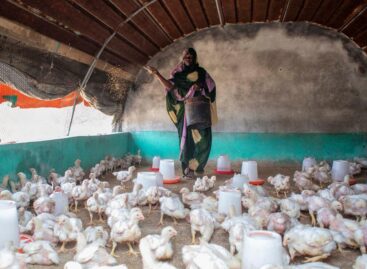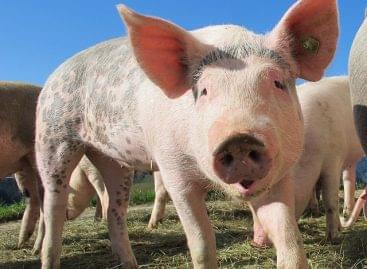World food prices drop in March
World food prices declined sharply in March, driven mostly by demand-side contractions linked to the effects of the COVID-19 pandemic and the drop in global oil prices due mostly to expectations of economic slowdown as governments roll out restrictions designed to respond to the health crisis.

Kézi pálmaolaj-sajtolás. Fotó: ©FAO/Ami Vitale
The FAO Food Price Index, which tracks monthly changes in the international prices of commonly traded food commodities, averaged 172.2 points during the month, down 4.3 percent from February.
“The price drops are largely driven by demand factors, not supply, and the demand factors are influenced by ever-more deteriorating economic prospects,” said FAO Senior Economist Abdolreza Abbassian.
The FAO Sugar Price Index posted the biggest drop, down 19.1 percent from the previous month. Causes include lower demand from out-of-home consumption linked to the confinement measures imposed by many countries, and lower demand from ethanol producers due to the steep fall in crude oil prices.
The FAO Vegetable Oil Price Index declined 12.0 percent in one month, mainly stemming from falling palm oil prices linked to the plunge in crude mineral oil prices and rising uncertainties over the pandemic’s impact on vegetable oil markets worldwide. Soy and rapeseed oil prices followed the trend.
“Oil prices have fallen by more than half during the past month, which catalyzes a large downward impact on biofuels, which are an important source of demand in the markets for sugar and vegetable oils,” said FAO analyst Peter Thoenes.
The FAO Dairy Price Index fell by 3.0 percent, driven by declining quotations and global import demand for skim and whole milk powders, due largely to disruptions in the dairy supply chains because of the containment measures aimed at controlling the spread of COVID-19.
The FAO Cereal Price Index in March declined 1.9 percent from February and stood at nearly its level of March 2019. International wheat prices declined, as the effects of large global supplies and broadly favorable crop prospects outweighed those of increased import demand from North Africa and some small export limitations imposed by the Russian Federation. Maize prices also declined due to both large supplies and much weaker demand from the biofuel sector.
International rice prices, by contrast, rose for the third consecutive month, with Indica quotations buoyed by stockpiling spurred by concerns over the pandemic and reports that Vietnam might introduce export bans – which the government has since downplayed.
FAO Director-General QU Dongyu told national leaders at last week’s G20 summit “to make sure that agricultural trade continues to play its important role in contributing to global food security” and to avoid policies that stymie trade flows that underpin food-supply systems. FAO is closely monitoring prices and logistical issue for food commodities with an eye to alerting countries of emerging problems that could exacerbate potential disruptions during the pandemic.
The FAO Meat Price Index fell by 0.6 percent, led by drops in international quotations for ovine and bovine meats, for which export availabilities are large and trade capacity dampened by logistic bottlenecks. But pig meat quotations rose amid surging global demand and as processing facilities were hampered by the restrictions on the movement of workers.
Comfortable cereal supplies
FAO’s forecast for 2020 world wheat production remains unchanged from the previous month, at the near record level of last year, which, coupled with ample inventories, will help shield food markets from turmoil during the coronavirus storm.
In this month’s Cereal Supply and Demand Brief, also released today, FAO’s hiked its estimate for worldwide cereal output in 2019 to 2 721 million tonnes, a 2.4 percent increase from 2018 . By type, FAO’s 2019 estimates now stand at 1 445 million tonnes for coarse grains, 763 million tonnes for wheat and 512 million tonnes for rice (milled basis).
While localized disruptions, mostly due to logistical issues, pose challenges to food supply chains in some markets, their anticipated duration and magnitude are unlikely to have a significant effect on global food markets, FAO said.
FAO’s 2020 forecast for world wheat production is unchanged from last month at 763 million tonnes, with expectations of lower outputs in the European Union, Ukraine and the United States of America compensated by anticipated production gains in the Russian Federation, India and Pakistan – although locust infestations in the latter two countries could temper the foreseen increase.
For maize, the leading coarse grain, bumper harvests are expected in Brazil and Argentina, and South Africa’s maize output is forecast to recover strongly after last year’s drought. Elsewhere, sowing decisions may be influenced by the downturn in international maize prices.
FAO’s forecast for world cereal utilizations for 2019/20 has been raised slightly to 2 722 million tonnes, a 1.2 percent annual increase. World cereal stocks at the close of the 2020 seasons are expected to contract by 8 million tonnes from their opening levels, pushing the global cereals stock-to-use ratio down to 30.7 percent, which is still considered a comfortable level. World trade in cereals is forecast to increase by 2.3 percent from the previous year to reach 420 million tonnes.
Related news
FAO: International food prices have been declining since September
🎧 Hallgasd a cikket: Lejátszás Szünet Folytatás Leállítás Nyelv: Auto…
Read more >FAO-Ministry of Agriculture Scholarship Program Continues
🎧 Hallgasd a cikket: Lejátszás Szünet Folytatás Leállítás Nyelv: Auto…
Read more >FAO: 2026 is the International Year of Rangelands and Pastoralists
🎧 Hallgasd a cikket: Lejátszás Szünet Folytatás Leállítás Nyelv: Auto…
Read more >Related news
László Pekó: “Coop isn’t just a network, it is a way of life – and has been for 30 years”
🎧 Hallgasd a cikket: Lejátszás Szünet Folytatás Leállítás Nyelv: Auto…
Read more >Winners of the 2025 Retailer of the Year award announced
🎧 Hallgasd a cikket: Lejátszás Szünet Folytatás Leállítás Nyelv: Auto…
Read more >K&H: significant price drop in the pork market
🎧 Hallgasd a cikket: Lejátszás Szünet Folytatás Leállítás Nyelv: Auto…
Read more >






